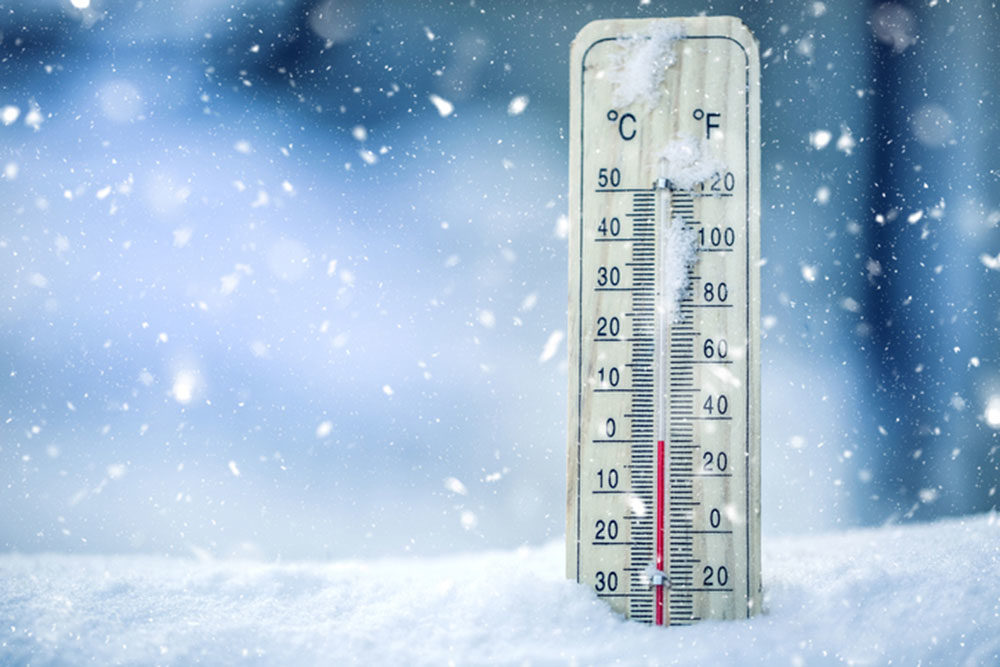
iStock
COLDER TEMPS indoors and out—though not too cold—can be healthy. They can improve insomniacs’ sleep, boost the immune system to better fight winter colds, and, despite increasing hunger, burn more calories.
Cold also helps people think more clearly and perform tasks better as well as making them more likely to tackle cognitive problems than warmer temperatures.
“Referential creativity”—better known as thinking outside the box—improves in colder weather as do personal relationships. People tend to reduce their activity level and make fewer but longer phone calls.
Keeping the nighttime temperature between 60 and 67 degrees Fahrenheit —considered “moderately cool”—is ideal for sleeping. Although body temperature drops at night for most people, insomniacs are less able to regulate body heat appropriately. For them, “cooling caps” have helped with falling asleep and provided better quality sleep.
Colder temperatures don’t necessarily make people sick. We get more colds during the winter because we spend more time indoors exchanging germs. And cold viruses can take hold more easily when cold, dry air makes nasal passages drier.
Wintertime runny noses—called “skier’s nose”—are most often unrelated to health but occur when cold weather spurs the respiratory system to produce extra mucus to counter the dry air, and to release more liquid when warmer breath meets colder air.
The effect of cold temperatures on the immune system is unclear. One study found shivering increased the metabolic rate and elevated blood concentrations of catecholamines (hormones released with stress and anxiety) activated the immune system to a slight extent, but the authors make no claims about the biological significance of the changes.
On the other hand, hotter body temperatures can “speed up defenses against tumors, wounds and infections,” according to researchers at the universities of Warwick and Manchester.
What feels cozy to humans is what farmers call the “thermoneutral zone”—the range of temperatures best suited to fattening up animals. That humans in modern society are “buffered from temperature extremes and spend an increasing amount of time in a thermally comfortable state… is hypothesized to contribute to the contemporary increase in obesity rates,” according to nutrition researcher Douglas Moellening at the University of Alabama at Birmingham. He recommends: “exposure to a varied, natural range of ambient temperatures.”
As temperatures drop, while appetite generally increases, energy expenditure must increase to maintain thermal homeostasis. Cooler temperatures may also increase the metabolism of brown fat (considered the “good” fat that our bodies burn for energy), as well as to actually “brown” (also called “beiging”) the white fat, which is the “bad” fat that simply accumulates.
Exposure to 10 hours of 66-degree temperatures at night boosted fat-metabolic activity by 10 percent in a small study, according to diabetes and obesity researcher Philip Kern at the University of Kentucky. (Other options include freezing body fat directly by using a process called cryolipolysis or applying a fat wrap; and wearing something like a “cold shoulder vest” to lower body temperature.)
For some people, though, frequently feeling cold can be a symptom of anemia, hypothyroidism or Raynaud’s syndrome. And ambient temperatures that are too low can cause the core body temperature to drop: at 96 degrees, motor coordination can begin to fail; 95 and below is considered hypothermia.
Thermoreceptors (specialized nerve endings) located beneath the skin create the sensation of hot or cold and respond to ambient temperatures as well as to chemicals like menthol and capsaicin. Cold receptors react to temperatures between 68 and 86 degrees, and warm receptors to between 86 and 104, although heat greater than 113 degrees can make cold receptors fire, a phenomenon called paradoxical cold that remains a mystery to scientists.
Contrary to the view that a warm hat prevents the release of body heat through the head, what works better is covering the back of the neck and lower back, which have the body’s greatest concentration of cold thermoreceptors. Consuming hot drinks stimulates warm thermoreceptors in the stomach. but the effect doesn’t last long after the drink is finished.
Based on the concept that feeling hot or cold has more to do with local temperature sensations than core body temperature, MIT scientists have developed the Embr Wave, a personal thermostat worn on the wrist that costs $300. The Wave produces “maximally effective temperature waves” to make you feel colder or warmer “in minutes.”
In aid of the “thermally underserved,” Embr labs raised more than six times its goal (a total of $636,000) in a 2017 kickstarter campaign for the Wave. Wearing it to a Las Vegas conference—to stay warm in freezing convention centers as well as overly air-conditioned casinos —one user reported: “it worked like a charm.”
—Mary Carpenter
Every Tuesday in this space, well-being editor Mary Carpenter reports on health news that affects our everyday lives.

Feeling a bit bad as I chose to live in the tropics but, yes, your points make sense as to some healthful effects of what cold weather can do for the body. A very interesting read.
Excellent overview. Being cool is so energizing, but life inside NY’s overheated apartments saps everything. Glad I live in the country!